If you're a birder or even if you just like birds, a Philippine tour should be at the top of your travel goals. There are 657 species of birds in the Philippines, 214 of which are endemic. Many birds of the Philippines are famous for their brilliant tropical colors and unique habits. Check out this list that includes the hornbill and three other captivating Philippine birds.
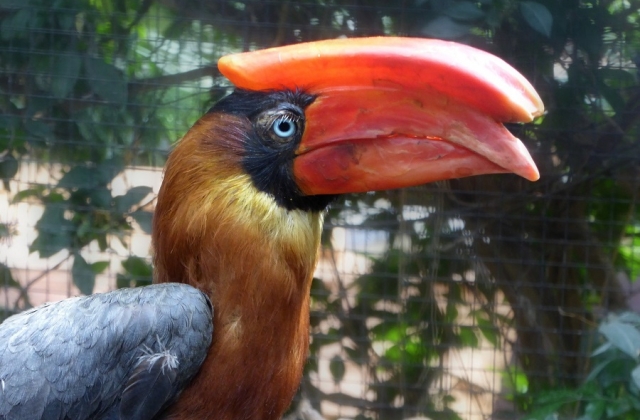 photo by Linda de Volder (via FLickr)
photo by Linda de Volder (via FLickr)
The Philippine Hornbill
Buceros hydrocorax, also known as the “rufous hornbill” or “Kalaw,” this species is one of the largest of the hornbill family. Sadly, the Philippine hornbill, like many animals, is suffering from a loss of habitat and encroaching human activities. The distinctive feature of the Philippine hornbill is the large, orange casque protruding from the upper mandible of the beak. These omnivores eat insects, small animals, and fresh fruit. Interestingly, females seal themselves into their nests to lay and brood over a clutch of eggs, with a hole only large enough for the male to bring food to her and the new chicks. This is the ultimate in nest protection!
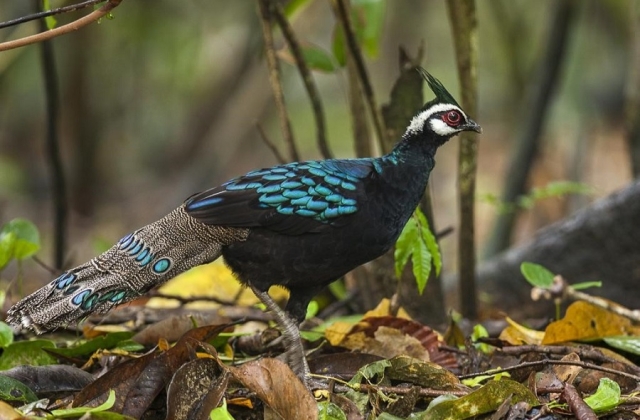 photo by Francesco Varonesi (via Flickr)
photo by Francesco Varonesi (via Flickr)
Palawan Peacock-Pheasant
Palawan peacock-pheasant, Polyplectron napoleonis, is a famous bird in the culture of the people of Palawan and is featured on the official seal of the City of Puerto Princesa. The male of the species is the most peacock-like, displaying a fantastic plumage iridescent with electric blue and green feathers. Like many males in the bird species, his beautiful plumage is to attract the affections of a female. This species is endemic to the Philippines, found in the rich, humid forests of Palawan, giving the bird its name. This bird also uniquely feeds almost entirely on invertebrates such as isopods, earwigs, insect larvae, mollusks, centipedes, and termites, though they will eat the occasional berry and seed. They are also monogamous and raise their young chicks for up to two years!
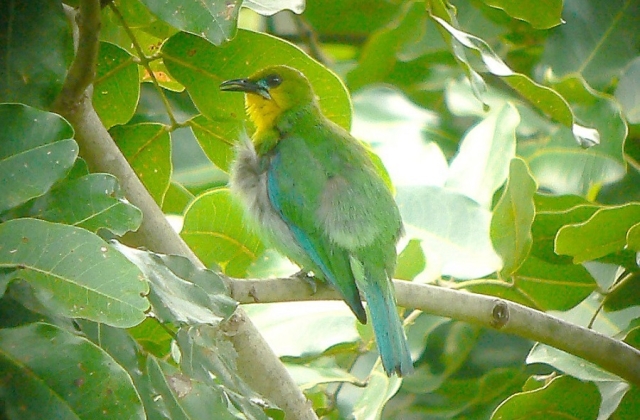 photo by Marka Haper (via Flickr)
photo by Marka Haper (via Flickr)
Yellow-Throated Leafbird
Another species endemic to Palawan, the yellow-throated leafbird (Chloropsis palawanensis) is a little beauty. It can be found in Palawan’s northern islands which include Busuanga, Calauit, Coron, and Culion. Its unique coloring includes the yellow throat, with flashes of turquoise, violet blue, and vibrant green. Its coloring and penchant for perching in lowland forest trees earned it the name of “leafbird.” It feasts on berries and seeds, mostly, with some small insects. While not specifically songbirds, they do have a beautiful call, and members of the leafbird family are known for mimicking sounds. Females lay 2-3 pinkish eggs, in cup-like nests found at the crowns of most trees, making them difficult for people to find and take a peek in, which suits the leafbird perfectly.
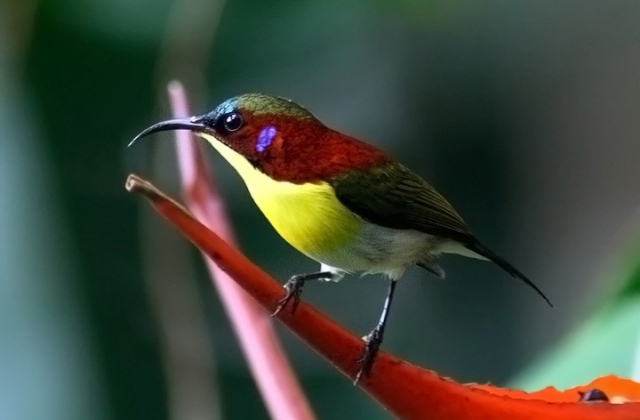 photo by Llimchiu (via Wikipedia Commons)
photo by Llimchiu (via Wikipedia Commons)
Handsome Sunbird
There are 12 different species of Sunbirds in the Philippines, and 7 of those are endemic. The Handsome Sunbird, Aethopyga bella, is the smallest of the Sunbirds in the Philippines and roams over most of the country, except in Palawan! This brightly colored bird loves fruit trees and flowering trees of the forest, feeding on nectar and small insects. Its call is a rapid "sit-sit-sit-sit-tee-tee-tee-tee,” which is distinctive. Unlike some of the birds on this list, the Handsome Sunbird is not endangered and enjoys a life of foraging with family members. The nest of the Handsome Sunbird is small and purse-like and made by the female with a generous amount of spider web.
Spot these four captivating birds and many others on a professionally guided trek or custom tour with Uncharted Philippines. Discover the magic of the Philippines for yourself.

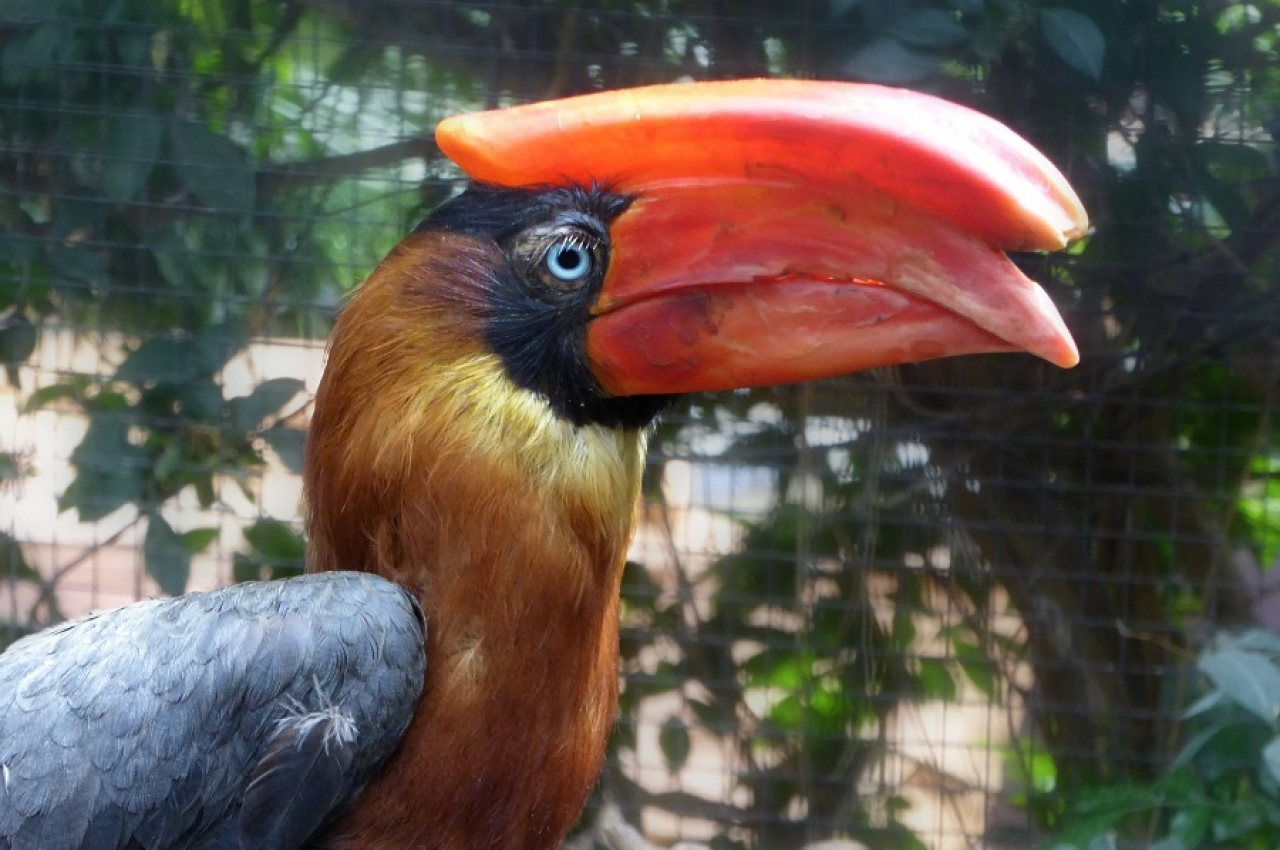 photo by Linda de Volder (via FLickr)
photo by Linda de Volder (via FLickr)